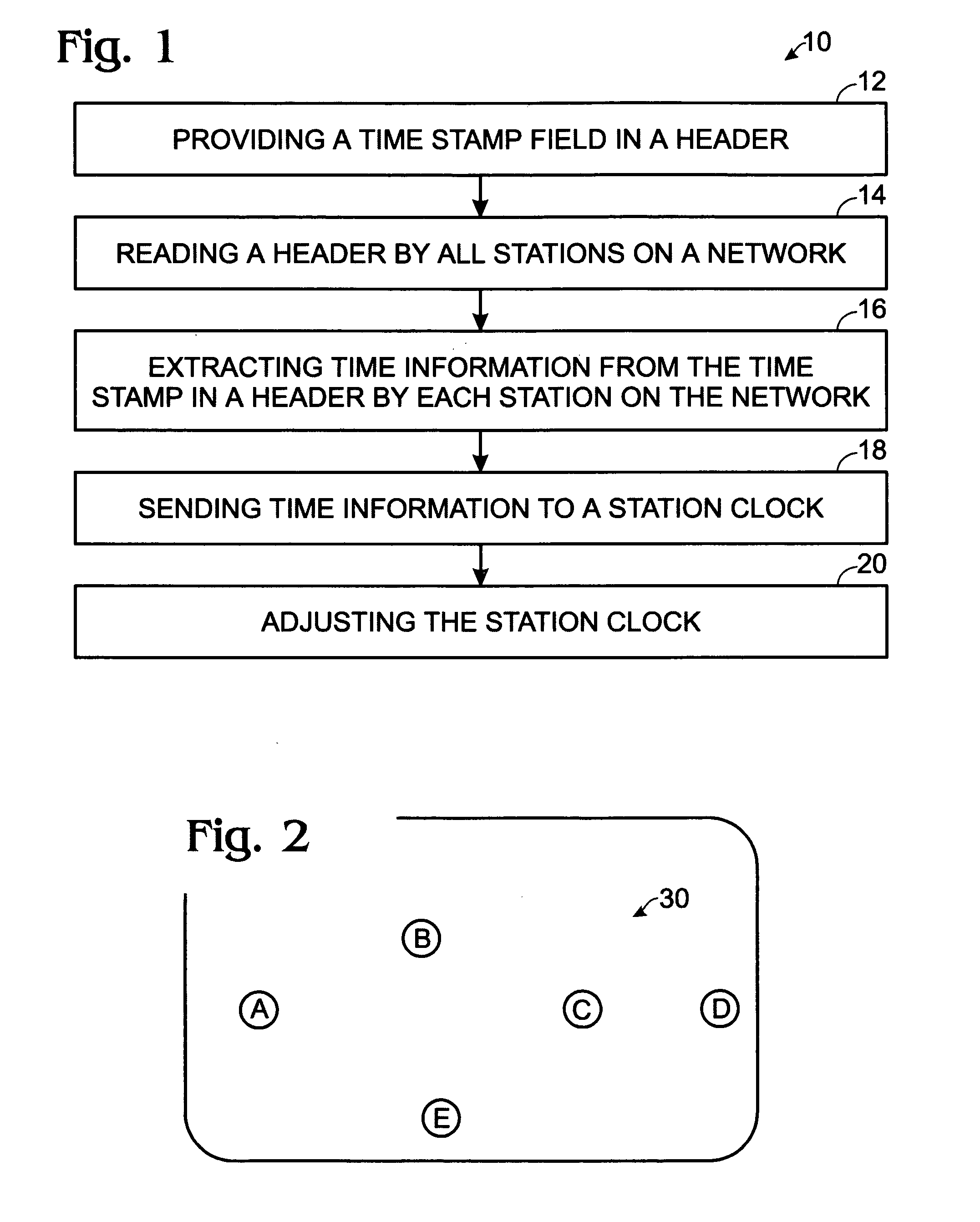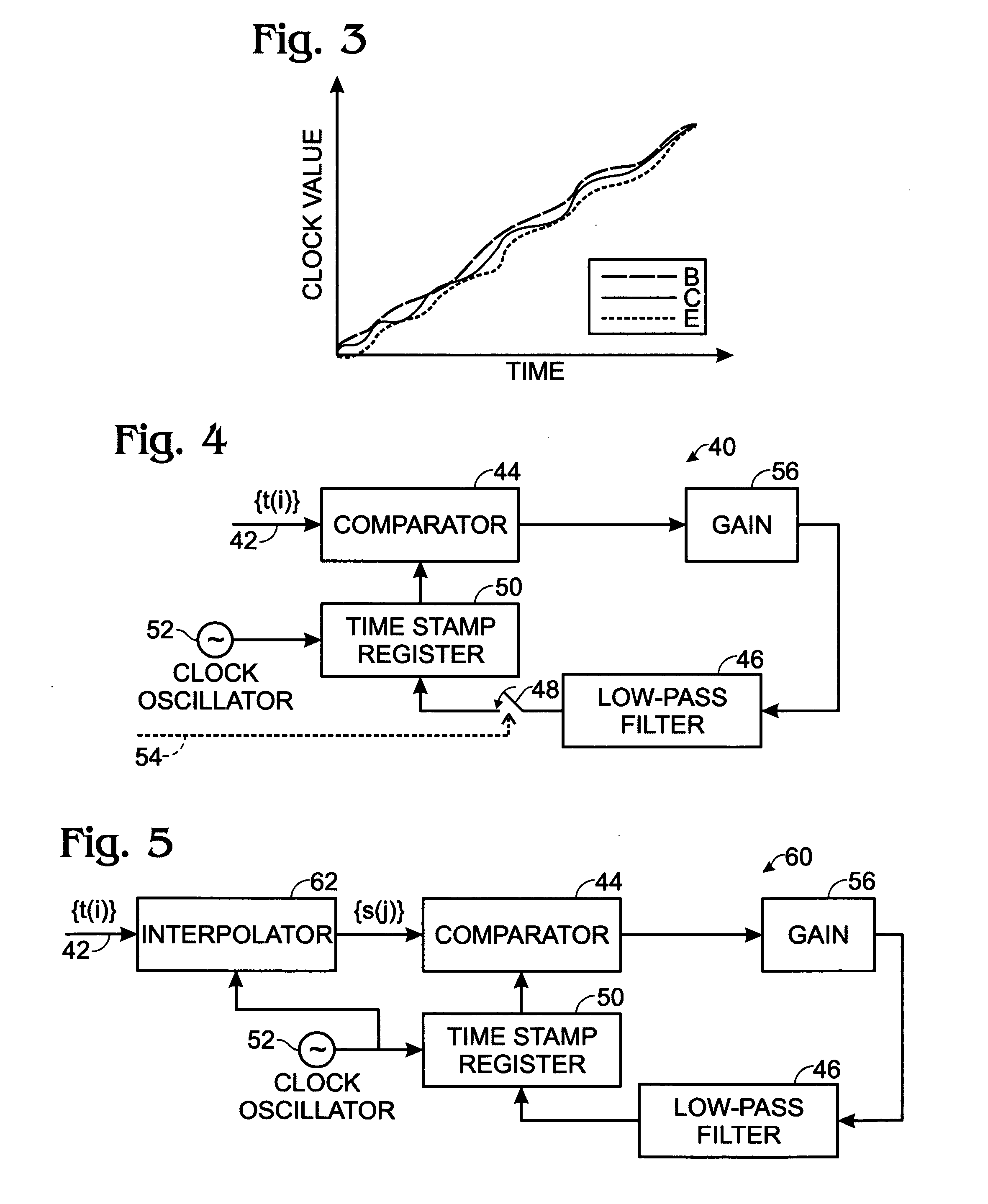System clock synchronization in an ad hoc and infrastructure wireless networks
a wireless network and system clock technology, applied in the direction of synchronisation arrangement, data switching network, selective content distribution, etc., can solve the problems of inability to meet synchronization requirements, inability to meet clock synchronization requirements, and higher “presentation” delay
- Summary
- Abstract
- Description
- Claims
- Application Information
AI Technical Summary
Benefits of technology
Problems solved by technology
Method used
Image
Examples
first embodiment
[0032] In the invention, each receiving station replaces the value of its own clock with the received clock value. However, there is a potential problem with this technique if the station has to make a drastic adjustment to its own clock should it receive a frame from a station that has drifted substantially, or has just entered the network and has not fully synchronized itself to the system. This may affect a clock that is already being used to control other transmissions, especially the MPEG-2TS transport. In another embodiment, the received clock value is fed into a Delay Locked Loop (DLL) circuit whose output is fed to a low-pass filter, having a long time-constant, which ultimately adjusts the clock. This ensures that the synchronization is done in a more gradual manner without affecting the transport of the applications.
[0033] To ensure that all stations' clocks remain synchronized to the same value, included in the header in all data and management frames is a “Time Stamp” as...
third embodiment
[0046]FIG. 6 shows a full state feedback mechanism based on the clock recovery mechanism.
[0047] The preferred embodiment is a combination of the first embodiment and the remaining embodiments, depicted in FIGS. 4-6, depending on whether the clock is being acquisitioned for the first time or whether the clock is in a tracking mode. ???
PUM
 Login to View More
Login to View More Abstract
Description
Claims
Application Information
 Login to View More
Login to View More - R&D
- Intellectual Property
- Life Sciences
- Materials
- Tech Scout
- Unparalleled Data Quality
- Higher Quality Content
- 60% Fewer Hallucinations
Browse by: Latest US Patents, China's latest patents, Technical Efficacy Thesaurus, Application Domain, Technology Topic, Popular Technical Reports.
© 2025 PatSnap. All rights reserved.Legal|Privacy policy|Modern Slavery Act Transparency Statement|Sitemap|About US| Contact US: help@patsnap.com



